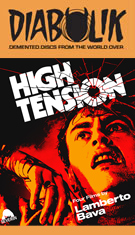
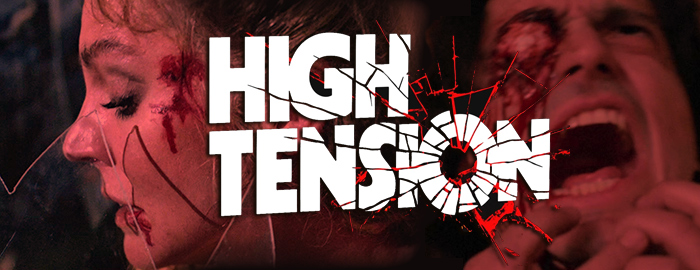
THE PRINCE OF TERROR
Color, 1989, 91 mins. 50 secs.
Directed by Lamberto Bava
Starring Tomas Arana, Carole André, David Brandon, Joyce Pitti, Ulisse Minervini
THE MAN WHO WOULDN'T DIE
Color, 1989, 95 mins.
Directed by Lamberto Bava
Starring Kevin Van Hoven, Martine Brochard, Gino Concari, Lino Salemme, Igor Zalewsky, Stefano Molinari, Peter Pitsch
SCHOOL OF FEAR
Color, 1989, 100 mins. 17 secs.
Directed by Lamberto Bava
Starring Alessandra Acciai, Jean Hebert, Stefano De Sandro, Morena Turchi, Daria Nicolodi
EYE WITNESS
Color, 1989, 99 mins. 54 secs.
Directed by Lamberto Bava
Starring Barbara Cupisti, Stefano Davanzati, Alessio Orano, Giuseppe Pianvati, Mary Sellers, Francesco Casale
Severin Films (Blu-ray) (US R0 HD) / WS (1.66:1) (16:9)
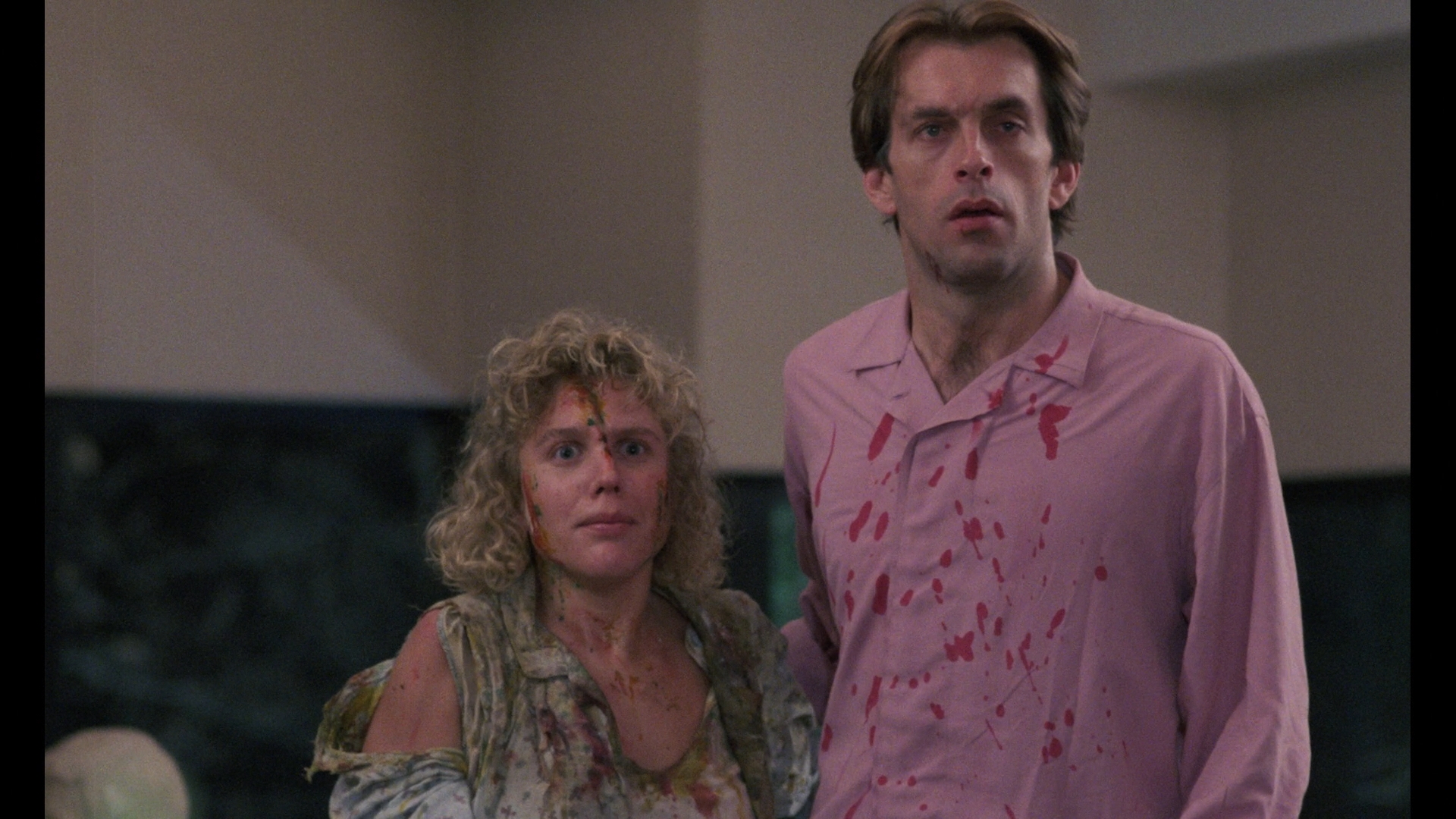 filmmakers scrambled to find ways to keep making films when the industry almost entirely moved over to TV late in the '80s,
filmmakers scrambled to find ways to keep making films when the industry almost entirely moved over to TV late in the '80s, 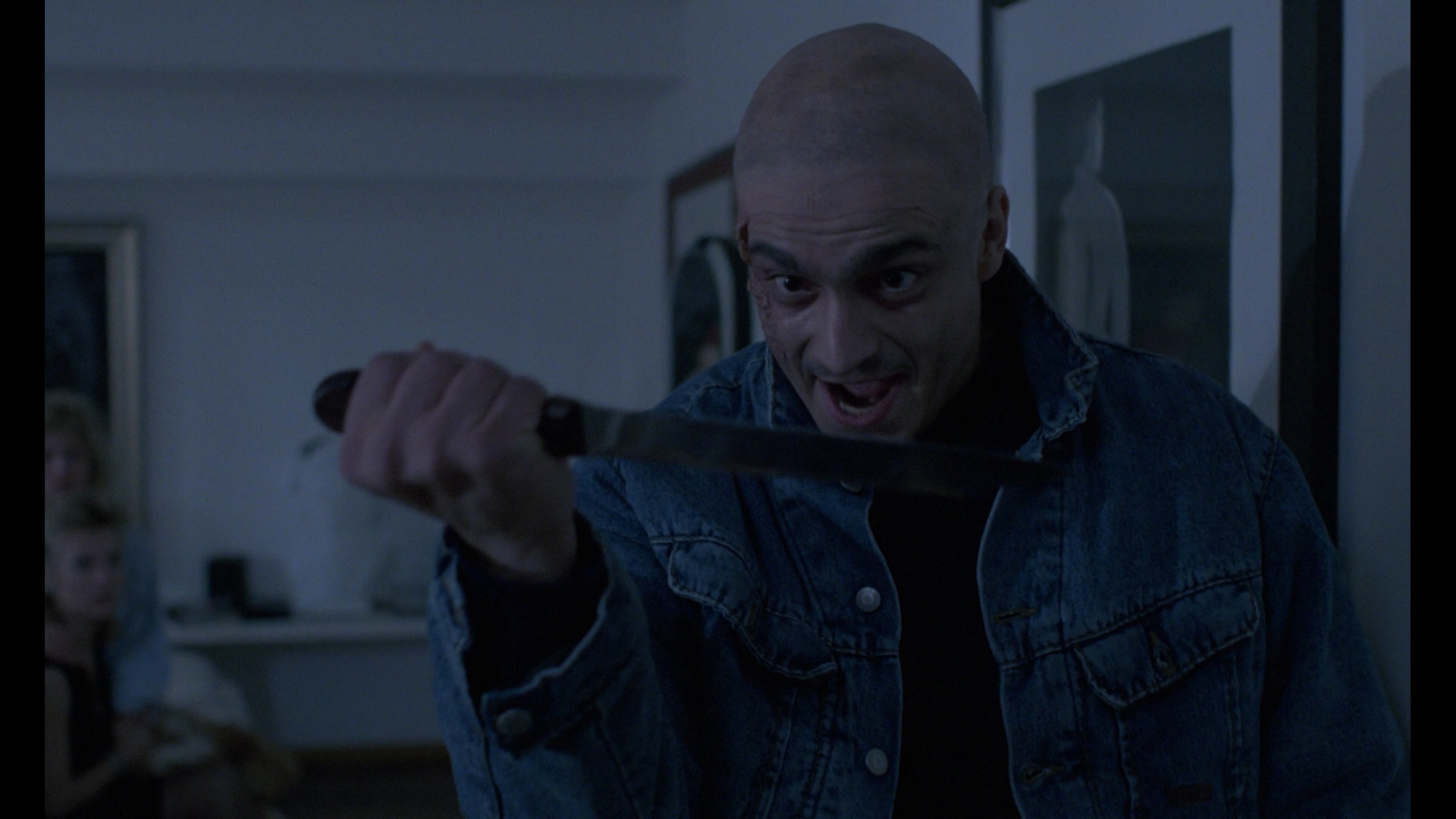 Lamberto Bava managed to stay very busy turning out a string of entertaining films for the small screen. First came a quartet of films in the Brivido Giallo series which all managed to get distribution outside of Italy including multiple home video releases. Less fortunate was another four-film series, Alta tensione (or High Tension), which ended up getting shelved for years and remained impossible to see in any kind of watchable edition even when bootlegs started turning up pulled from tapes sent around to distributors. All of them were completed in 1989, but it was a long, long haul until they finally got the treatment they deserved in 2025 as a Blu-ray set from Severin Films that fills a very important gap in late '80s Italian genre history.
Lamberto Bava managed to stay very busy turning out a string of entertaining films for the small screen. First came a quartet of films in the Brivido Giallo series which all managed to get distribution outside of Italy including multiple home video releases. Less fortunate was another four-film series, Alta tensione (or High Tension), which ended up getting shelved for years and remained impossible to see in any kind of watchable edition even when bootlegs started turning up pulled from tapes sent around to distributors. All of them were completed in 1989, but it was a long, long haul until they finally got the treatment they deserved in 2025 as a Blu-ray set from Severin Films that fills a very important gap in late '80s Italian genre history.  incent's most recent project. It's really best going into this one as cold as possible since the exact nature of the horror here -- supernatural, home invasion, mind games, or something else entirely -- is left undetermined until the absolutely
incent's most recent project. It's really best going into this one as cold as possible since the exact nature of the horror here -- supernatural, home invasion, mind games, or something else entirely -- is left undetermined until the absolutely 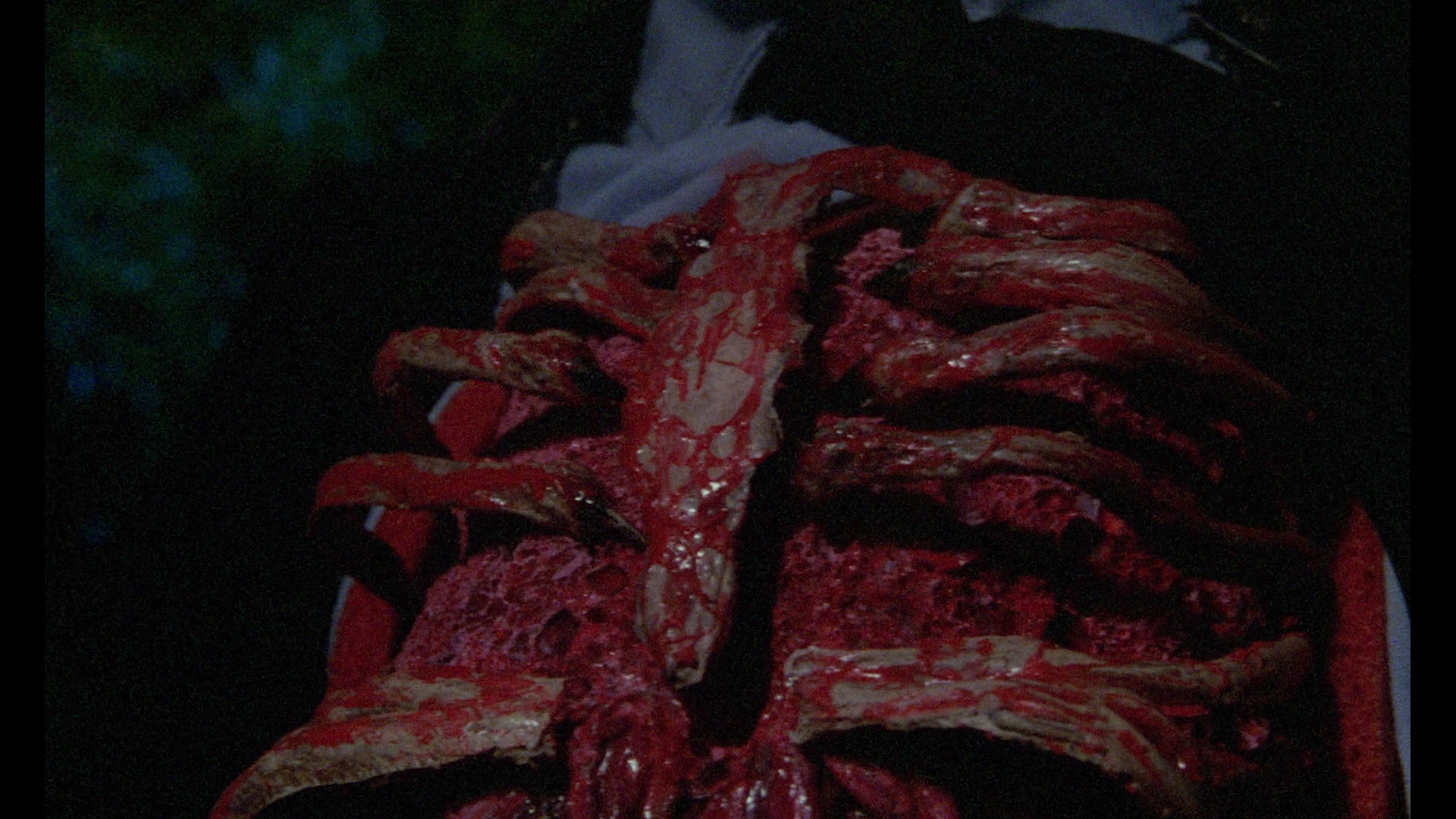 outrageous final ten minutes. Arana (who also starred in Bava's Body Puzzle) and Brandon (from Bava's Delirium) are clearly having a lot of fun here bouncing off each other, and the house itself with a central circular hallway is a terrific setting for what amounts to a five-character chamber piece. Several names behind the camera make big contributions here with Sergio Stivaletti unleashing some fun makeup effects (especially in the fakeout opening scene and the big finale) and Simon Boswell (Demons 2) brought on again to handle scoring duties for all four films in the series. You also get a nice cameo from The Ogre's Virginia Bryant early on as a journalist, while André does fine in a mostly one-note part and Minervini goes very, very hammy for reasons that don't become clear until halfway through. The one bum note is Pitti cast in a role clearly written for someone at least a decade younger, but that's easy to overlook.
outrageous final ten minutes. Arana (who also starred in Bava's Body Puzzle) and Brandon (from Bava's Delirium) are clearly having a lot of fun here bouncing off each other, and the house itself with a central circular hallway is a terrific setting for what amounts to a five-character chamber piece. Several names behind the camera make big contributions here with Sergio Stivaletti unleashing some fun makeup effects (especially in the fakeout opening scene and the big finale) and Simon Boswell (Demons 2) brought on again to handle scoring duties for all four films in the series. You also get a nice cameo from The Ogre's Virginia Bryant early on as a journalist, while André does fine in a mostly one-note part and Minervini goes very, very hammy for reasons that don't become clear until halfway through. The one bum note is Pitti cast in a role clearly written for someone at least a decade younger, but that's easy to overlook. 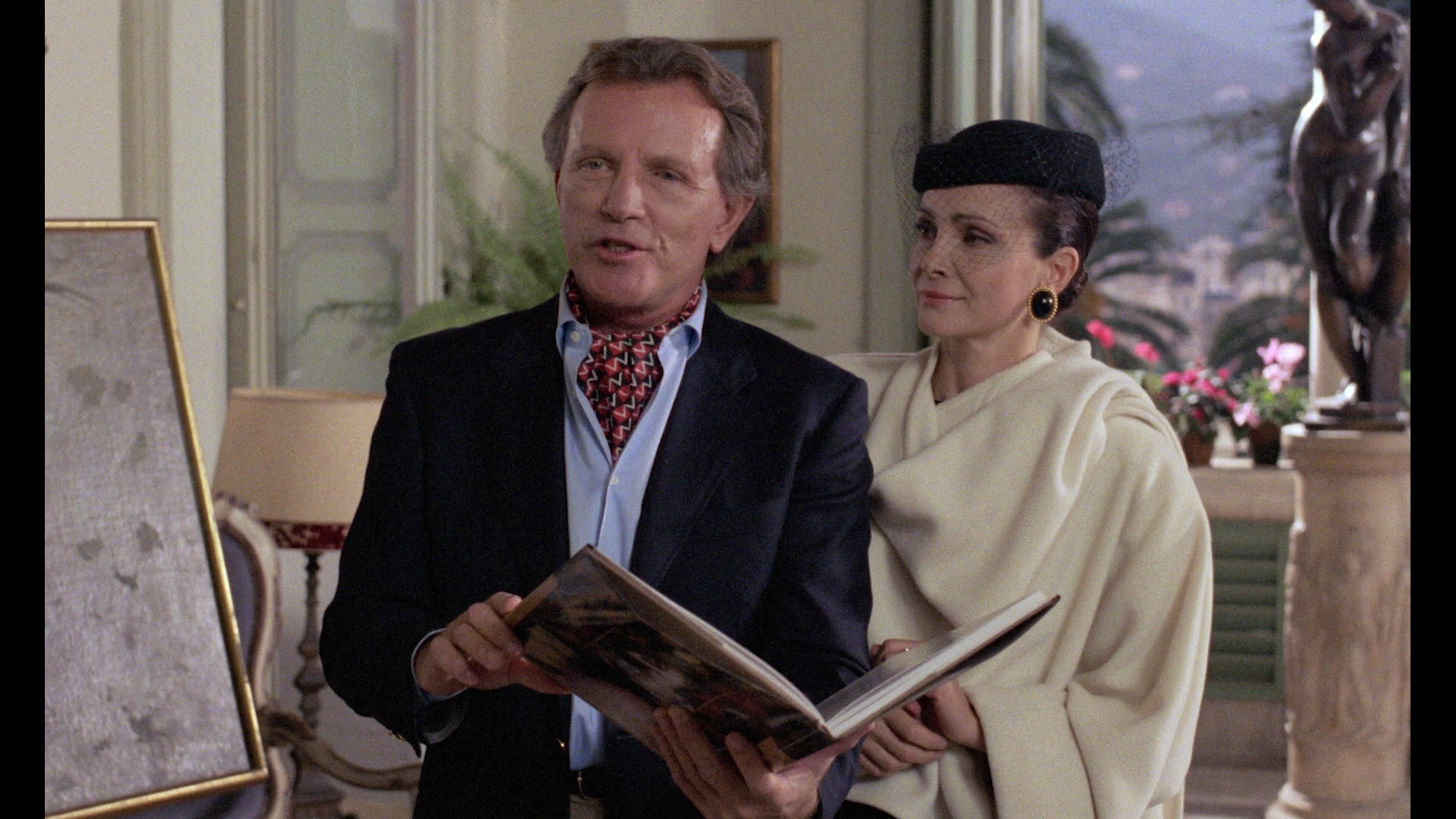 with Andrea Piazzesi, the connections to his films made in America, the decision to shoot these films in 35mm, the delay in these films getting
with Andrea Piazzesi, the connections to his films made in America, the decision to shoot these films in 35mm, the delay in these films getting 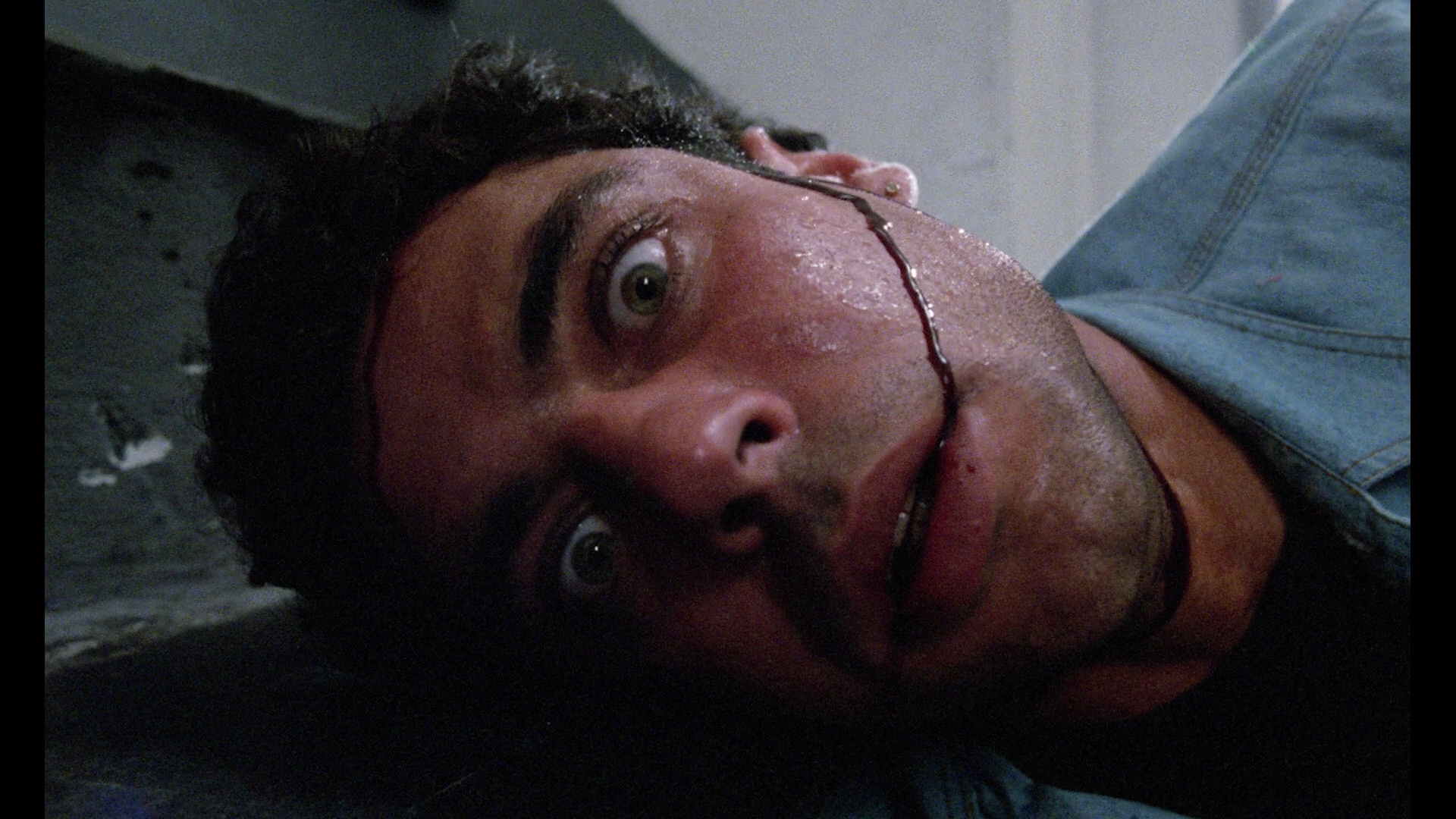 to the public, and his issues with the High Tension title. Then in "We Call Him Maestro" (17m52s), Bava goes into this film in particular including the collaboration with screenwriter Dardano Sacchetti going back to Shock, the concept behind the opening, the intended international appeal by using live English-language sound for the three leads, and his thoughts on the actors and the final result.
to the public, and his issues with the High Tension title. Then in "We Call Him Maestro" (17m52s), Bava goes into this film in particular including the collaboration with screenwriter Dardano Sacchetti going back to Shock, the concept behind the opening, the intended international appeal by using live English-language sound for the three leads, and his thoughts on the actors and the final result.
 to Rabid Dogs. The younger Bava handles the material well enough here with a nice Euro-crime vibe and some gory kill scenes including a standout bathroom attack reminiscent of A Blade in the Dark. Like that film, this one is full of unsympathetic characters which makes the giallo-style body count in the final stretch satisfying to watch. Extra points for the (maybe intentionally) hilarious climax involving a speeding car with characters repeatedly yelling "You whore!" and "The painting!"
to Rabid Dogs. The younger Bava handles the material well enough here with a nice Euro-crime vibe and some gory kill scenes including a standout bathroom attack reminiscent of A Blade in the Dark. Like that film, this one is full of unsympathetic characters which makes the giallo-style body count in the final stretch satisfying to watch. Extra points for the (maybe intentionally) hilarious climax involving a speeding car with characters repeatedly yelling "You whore!" and "The painting!" with a strong focus on their creative process that reached an apex together with
with a strong focus on their creative process that reached an apex together with 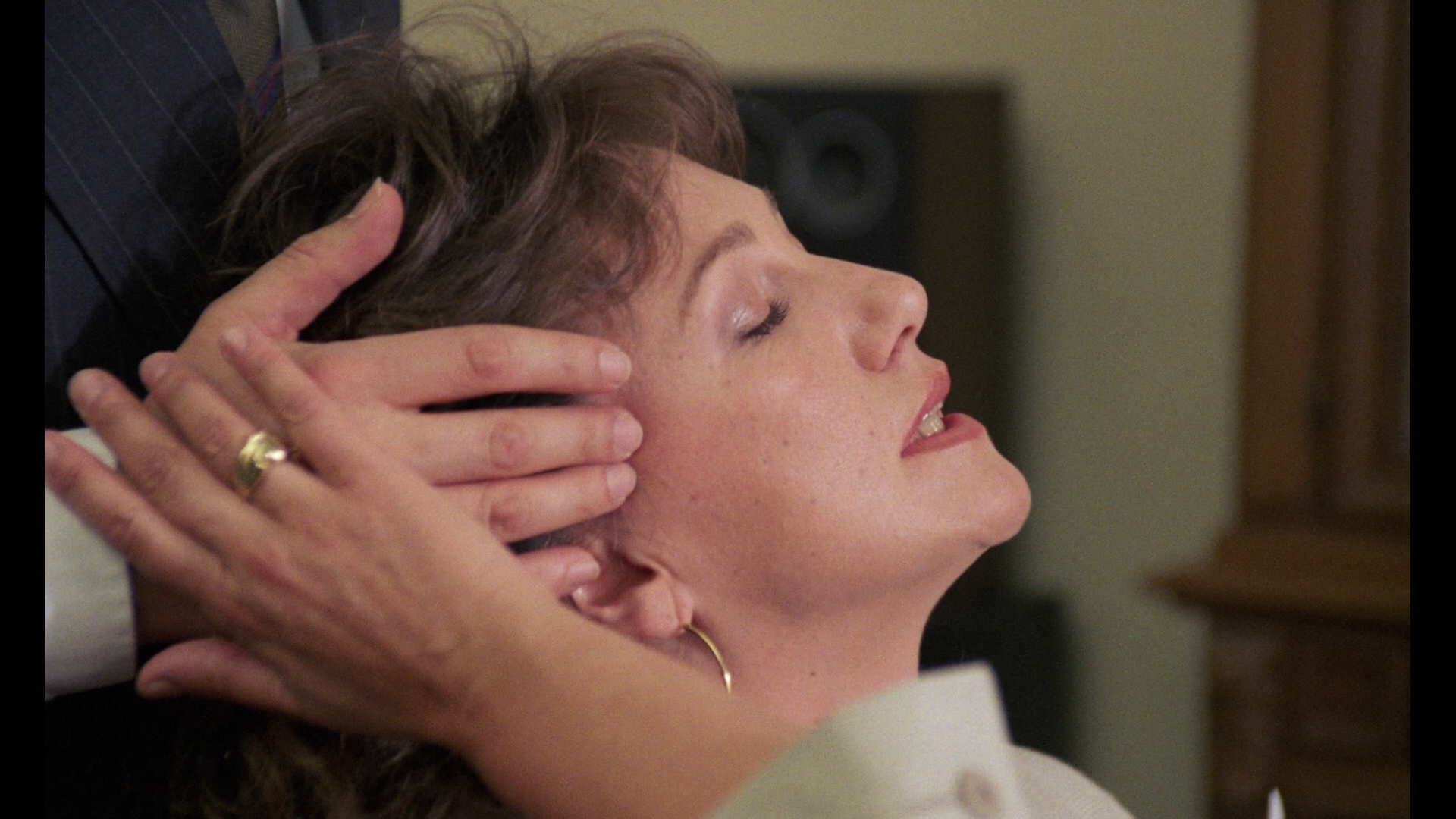 Demons.
Demons. a solid co-feature with something like Phenomena or Aenigma (despite having no real supernatural content). Boswell's score is arguably his best of the quartet here with a creepy, delicate touch that works nicely; it's no wonder that this disc also comes with a soundtrack CD spanning Bava and Boswell's work together including numerous previously unreleased
a solid co-feature with something like Phenomena or Aenigma (despite having no real supernatural content). Boswell's score is arguably his best of the quartet here with a creepy, delicate touch that works nicely; it's no wonder that this disc also comes with a soundtrack CD spanning Bava and Boswell's work together including numerous previously unreleased 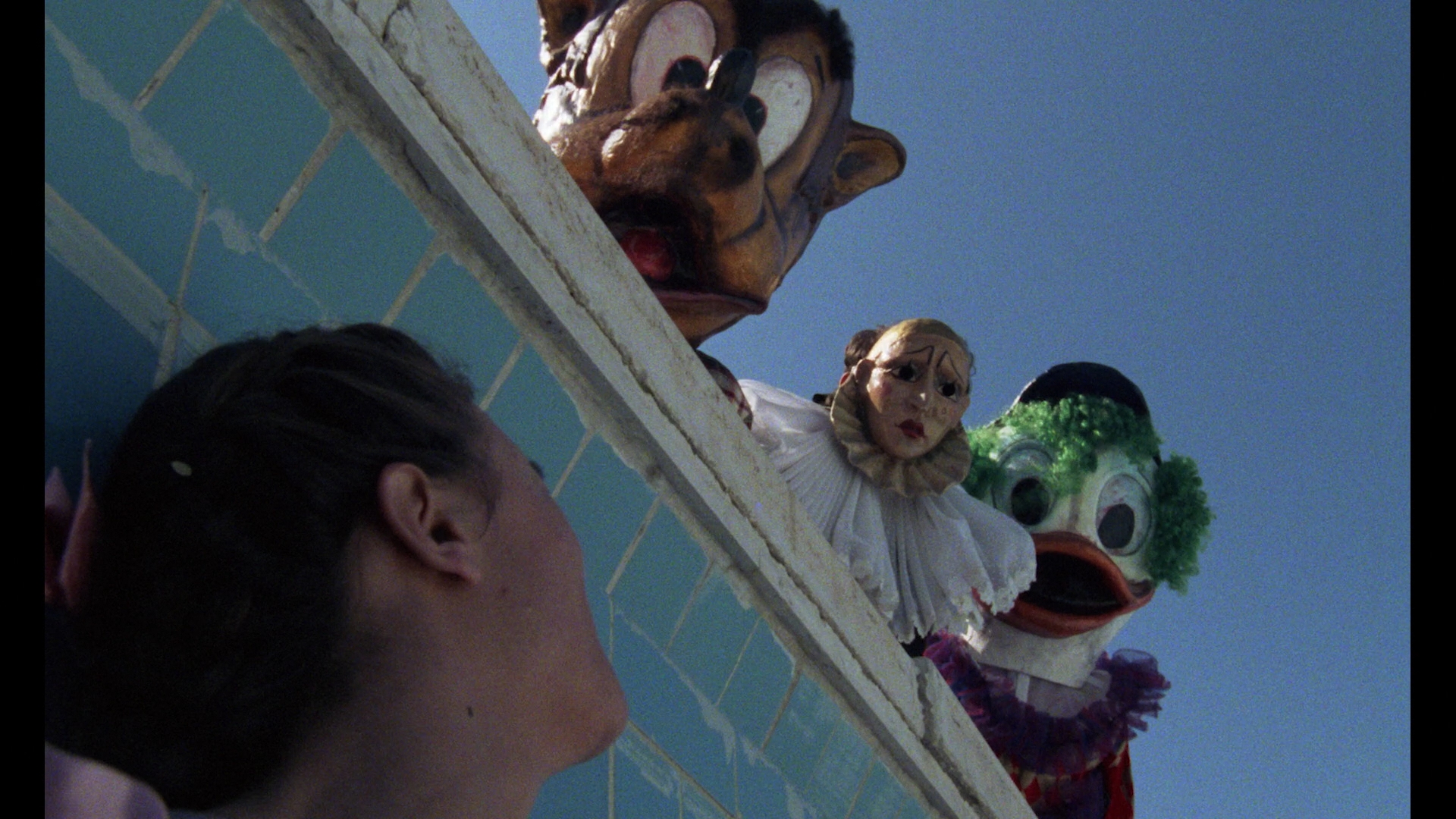 tracks from this film, The Man Who Wouldn't Die, and The Mask of Satan, plus some CD premiere cues from Delirium. One really nice inclusion here is the track "Red Sun" from Demons 2, which was originally called "Sally's Garage" on the rare Japanese CD decades ago and hasn't been seen since. One of the highlights of that score, it's great to have back in circulation at last compared to the vastly inferior track of the same title included on the current Demons 2 soundtrack making the rounds. As for the film itself, it looks great here and is the one that definitely plays better in its Italian version since the dubbing on all of the kids is far more natural and effective. Try both and see which one you prefer though. In "The Tale of Evil Children" (18m15s), Bava chats about the killer kid idea going back to his father's Kill, Baby! Kill!, the script by Roberto Gandus, Pupi Avati, and Sacchetti, the bullying experiences in his own life that lingered here, the sequence he feels is one of the best he ever shot, and the filming in Livorno. In "Play the Game" (9m45s), Gandus is interviewed about being brought on by Avati, the influence of Hitchcock's Rope and a shocking real-life incident in Italy, and the issues he had with a rewrite done after him. Finally in "When
tracks from this film, The Man Who Wouldn't Die, and The Mask of Satan, plus some CD premiere cues from Delirium. One really nice inclusion here is the track "Red Sun" from Demons 2, which was originally called "Sally's Garage" on the rare Japanese CD decades ago and hasn't been seen since. One of the highlights of that score, it's great to have back in circulation at last compared to the vastly inferior track of the same title included on the current Demons 2 soundtrack making the rounds. As for the film itself, it looks great here and is the one that definitely plays better in its Italian version since the dubbing on all of the kids is far more natural and effective. Try both and see which one you prefer though. In "The Tale of Evil Children" (18m15s), Bava chats about the killer kid idea going back to his father's Kill, Baby! Kill!, the script by Roberto Gandus, Pupi Avati, and Sacchetti, the bullying experiences in his own life that lingered here, the sequence he feels is one of the best he ever shot, and the filming in Livorno. In "Play the Game" (9m45s), Gandus is interviewed about being brought on by Avati, the influence of Hitchcock's Rope and a shocking real-life incident in Italy, and the issues he had with a rewrite done after him. Finally in "When 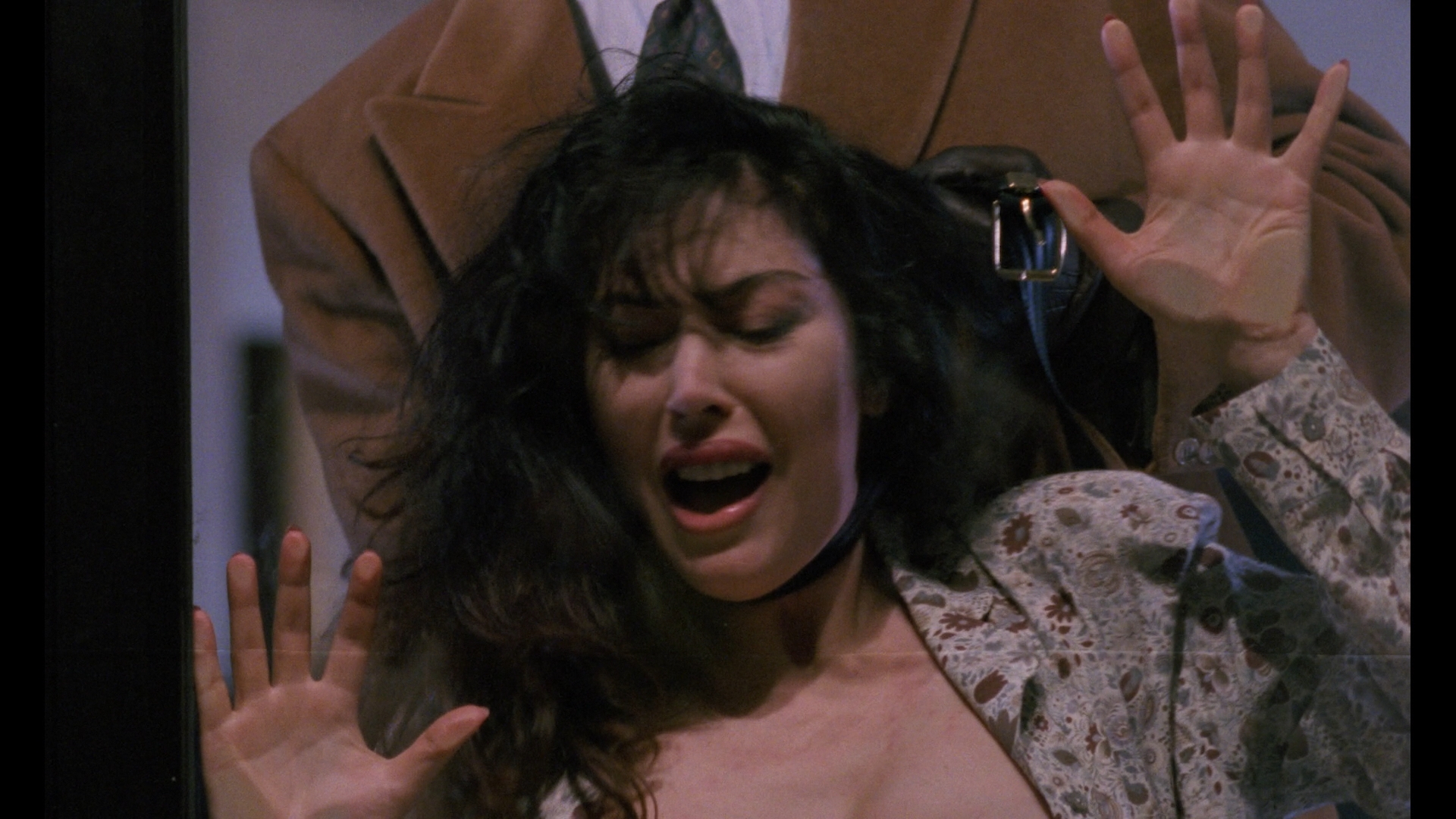 Bava Met Boswell" (31m56s), the composer goes into his days working composing in Italy and his memories of working on these films getting inspiration from Bava's inventive nature on limited finances with The Mask of Satan being among his
Bava Met Boswell" (31m56s), the composer goes into his days working composing in Italy and his memories of working on these films getting inspiration from Bava's inventive nature on limited finances with The Mask of Satan being among his 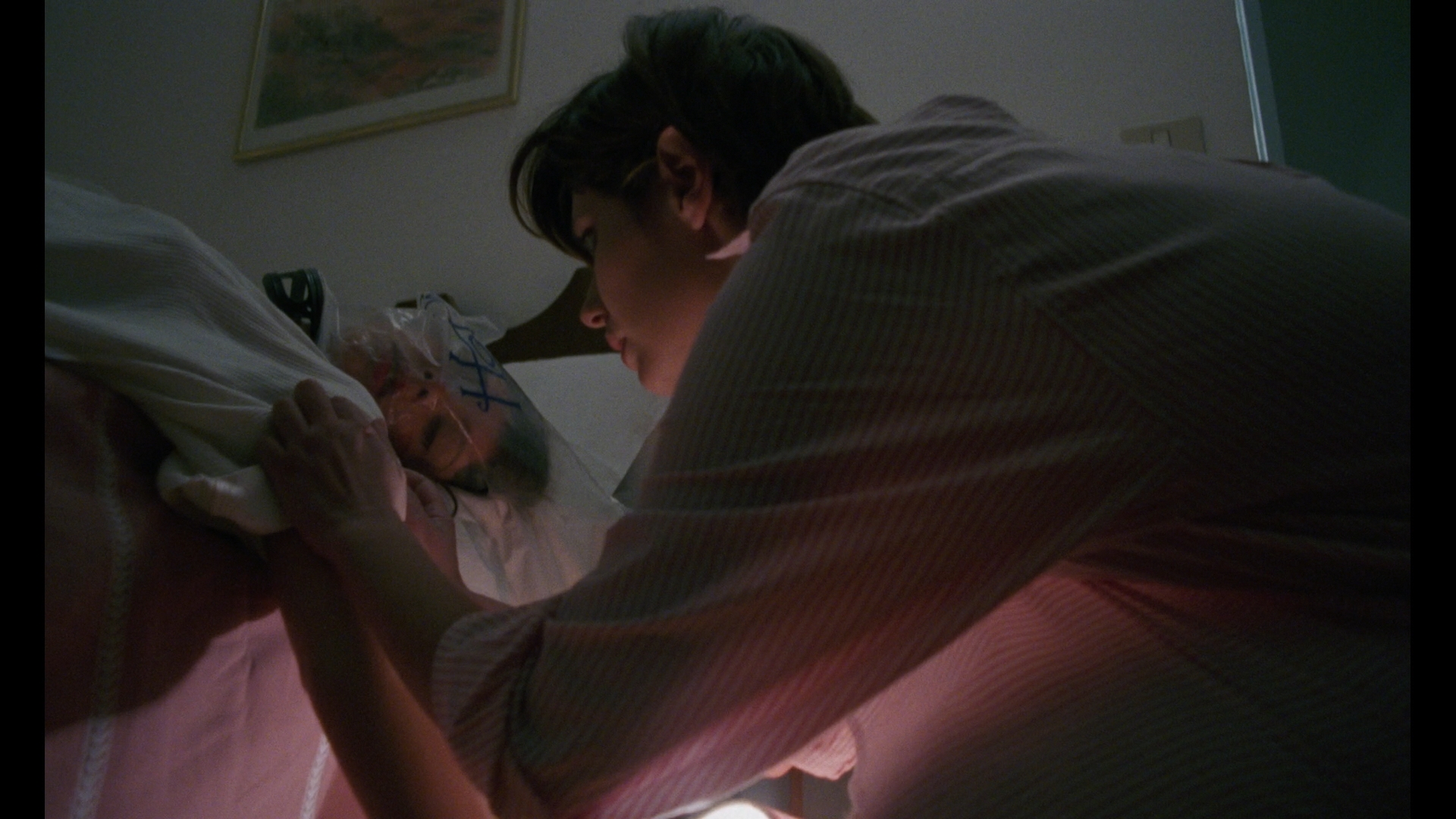 favorites.
favorites. Orano. There's really no murder mystery angle here since we see the killer right at the beginning, but the unusual cat-and-mouse structure still keeps you on your toes with a nice twist on the usual woman in peril formula. Bava certainly knew his
Orano. There's really no murder mystery angle here since we see the killer right at the beginning, but the unusual cat-and-mouse structure still keeps you on your toes with a nice twist on the usual woman in peril formula. Bava certainly knew his 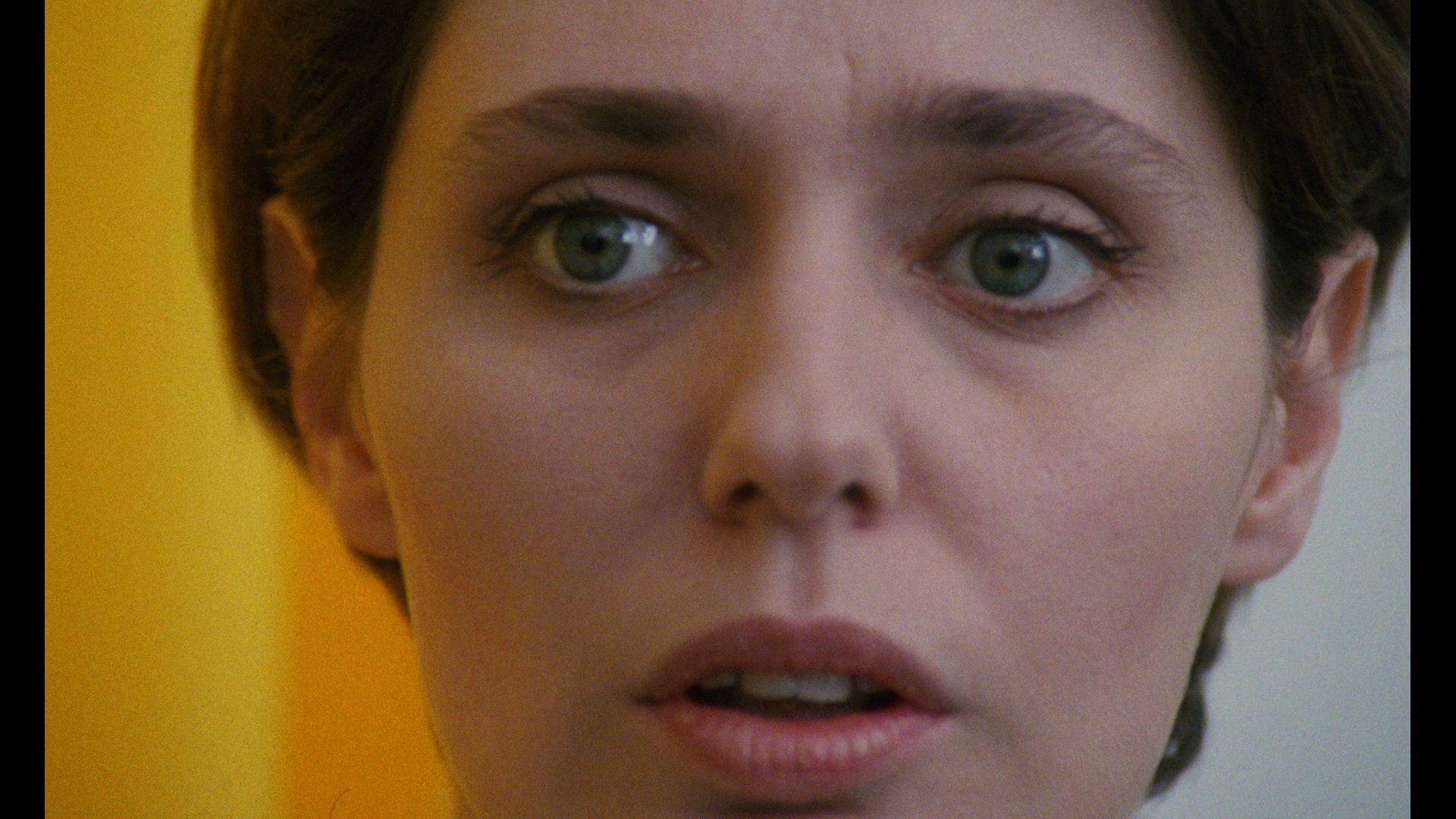 way around a giallo by this point with this one falling in between Delirium and Body Puzzle, and it doesn't suffer by comparison at all. Don't miss that last ten minutes either, which is a real jaw dropper you'll never believe. It's been a tough one to appreciate until now though since available copies were very, very poor quality, so the Blu-ray goes a long way to making it appreciable as a solid entry in Bava's '80s filmography and a nice way to round out the series. The previously buried English track is preferable here as it fits the spoken language, but the Italian works quite well, too; both sound fine here with the usual subtitle options. A new commentary by Howarth and myself is also included but can't be reviewed here. In "The Last Giallo" (15m42s), Bava discusses the origins of the film with Andrea Piazzesi, his interest in the strengths of different kinds of physical diversity throughout his films, other contributors to the screenplay, the location scouting, Cupisti's strength as a thespian, and his admiration for actress Mary Sellers (another Stagefright vet). Finally in "Love Is Blind" (12m26s), Cupisti discusses her background in dance, her early acting days with Michele Soavi, her positive experience working with Bava, her vain attempts to see this film, and the reason she decided to step away from acting.
way around a giallo by this point with this one falling in between Delirium and Body Puzzle, and it doesn't suffer by comparison at all. Don't miss that last ten minutes either, which is a real jaw dropper you'll never believe. It's been a tough one to appreciate until now though since available copies were very, very poor quality, so the Blu-ray goes a long way to making it appreciable as a solid entry in Bava's '80s filmography and a nice way to round out the series. The previously buried English track is preferable here as it fits the spoken language, but the Italian works quite well, too; both sound fine here with the usual subtitle options. A new commentary by Howarth and myself is also included but can't be reviewed here. In "The Last Giallo" (15m42s), Bava discusses the origins of the film with Andrea Piazzesi, his interest in the strengths of different kinds of physical diversity throughout his films, other contributors to the screenplay, the location scouting, Cupisti's strength as a thespian, and his admiration for actress Mary Sellers (another Stagefright vet). Finally in "Love Is Blind" (12m26s), Cupisti discusses her background in dance, her early acting days with Michele Soavi, her positive experience working with Bava, her vain attempts to see this film, and the reason she decided to step away from acting.